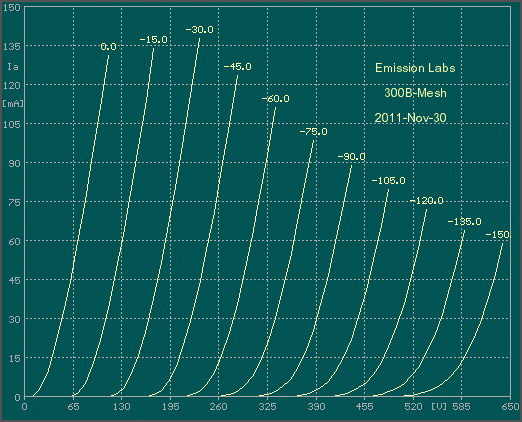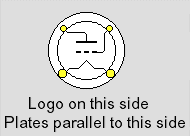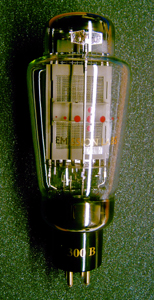오늘 (7-24-2017) 올라온 정보입니다

|
EML 300B Mesh Uploaded: 24 Jul 2017 |
Description
Features
|
300B Mesh |
|
|
|
| Filament Voltage |
|
| Tolerance on filament voltage |
|
| Filament Current |
|
|
300B Mesh Maximum Conditions |
|
| Plate Voltage |
|
| Plate Current |
|
| Peak Plate Dissipation |
|
|
Grid resistor @ Plate Dissipation= 22 Watt |
|
| Grid resistor @ Plate Dissipation= 24 Watt |
|
| Grid resistor @ Plate Dissipation= 26 Watt |
|
| Grid resistor @ Plate Dissipation= 28 Watt |
|
|
300B Factory Test conditions |
|
| Plate Voltage |
|
| Plate Dissipation |
|
| Plate Current |
|
| Grid Voltage |
|
| Plate Impedance |
|
| Amplification Factor |
|
| Transconductance |
|
| 300B Mesh Recommended Single Ended operating points | |||||||
|---|---|---|---|---|---|---|---|
|
Plate Voltage |
Grid Voltage |
Plate Current (ma) |
Plate Rp (Ohm) |
Load |
Plate Dissipation (Watt) |
Power Output (Watt) |
2nd harm. |
|
350 |
-73 |
63 |
720 |
2000 |
22 |
10.6 |
21 |
|
350 |
-73 |
63 |
720 |
3000 |
22 |
8.7 |
26 |
|
350 |
-73 |
63 |
720 |
4000 |
22 |
7.3 |
30 |
|
350 |
-72 |
70 |
685 |
3000 |
24 |
8.5 |
28 |
|
. |
|||||||
|
400 |
-74 |
60 |
720 |
3500 |
24 |
10.5 |
26 |
|
. |
|||||||
|
440 |
-101 |
59 |
775 |
4000 |
26 |
12 |
26 |
|
440 |
-101 |
59 |
775 |
5500 |
26 |
9.6 |
30 |
|
* For best lifetime, it is recommended to choose maximum 26 Watt Plate dissipation, though 28 Watt is possible at some compromise with life time. If you need higher output power than 300B-Mesh can do, choose standard 300B, or upgrade to 300B-XLS. Choice of output transformer impedance: For each working point, a wide range of primary impedance is possible. When using a transformer of another value, you can estimate the output power and distortion by averaging between two rows of this table. Example: 450V, 60mA. Use of Lundahl LL1679-70mA (4k5 type). This will give you appr. 11.5 Watt @ 27dB 2nd harmonics. (28dB distance of signal to 2nd harmonics. |
|||||||

EML 300B-MESH Plate Curves
Download these curves as PTE file - What is that?
|
|
|
 |
(but excluding pins) 155 x 65 mm |
|
|
|
|
pair in gift box |
740 Gram |
|
© Emission Labs. All Rights Reserved.
![]()


 EML-300B-Mesh 나의관심
EML-300B-Mesh 나의관심

















